When Yamaha pulled its factory team out of racing at the end of the 1968 season it marked the end of a legendary era in the 250cc class. The mid-sixties had been full of exotic machines from three Japanese factories battling to prove the supremacy of their technical approaches. Honda was in those days still focusing on four-strokes and its six-cylinder engine was the ultimate expression of that technology. On the other hand, Yamaha and Suzuki both set out to explore and exploit the mysteries of two-stroke design and their multi-cylinder racers of that time were at the outer limits of that particular world.
In the 250cc class Suzuki had come up with a fast but fragile square-four that was essentially a doubling-up of its World Championship winning 125cc twin. Yamaha on the other hand had initially been more conservative and first opted for 250cc parallel twins.
Both manufacturers used technology that had been winning races for the East German MZ team and which had been designed by its two-stroke guru, Walt0e were discs mounted on the crankshaft that were slotted so as to precisely control the flow and the timing of the fuel/air charge from the carburettors directly into the crankcase as they opened and closed during the rpm cycle.
Combined with the effect of expansion chamber exhausts, these brought the relatively simple two-strokes on a par with – and sometimes ahead of – the much more complex multi-cylinder four-strokes in the 250cc class of the 1960s. Using this technology and aided by the riding skills of Phil Read, Yamaha’s RD56 twins won both the rider and constructor World Championships in 1964 and ’65.
Yamaha 2-Strokes
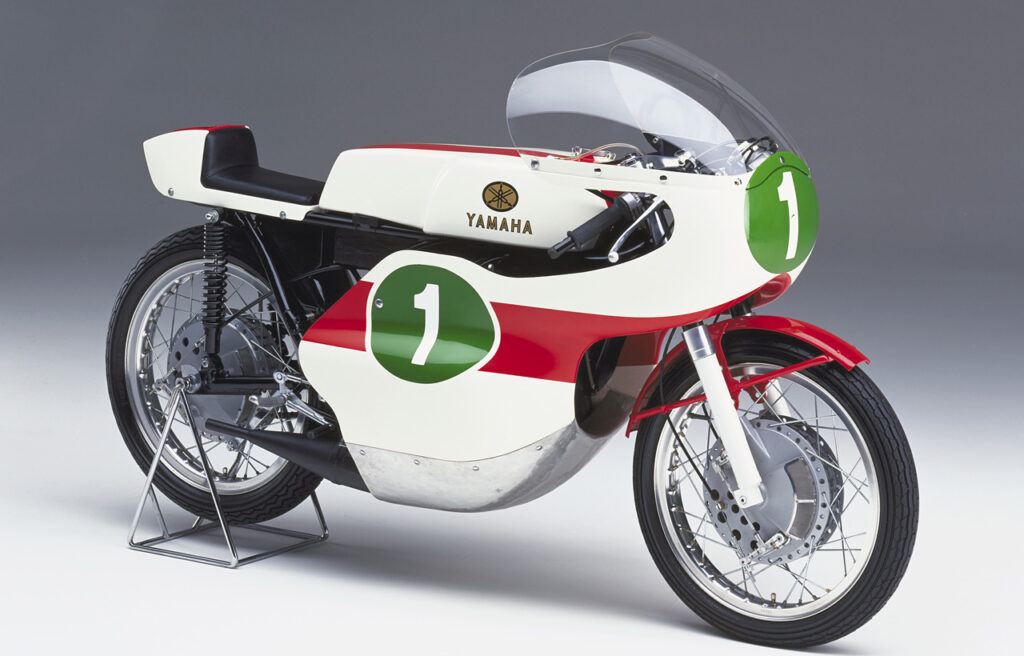
The 1962 Yamaha RD56 produced 50bhp from its 250cc and was by far the most powerful two-stroke of its generation
The 1962 Yamaha RD56 produced 50bhp from its 250cc and was by far the most powerful two-stroke of its generation.
Advances in engine technology were moving at a previously unprecedented pace in the 1960s and in reaction to the replacement by Honda of its four-cylinder machines with even more powerful six-cylinder engines in 1966, the Yamaha RD56 twins were replaced by new bikes with V4 engines for both the 125 and 250cc classes in 1967.
The 125 put out 45bhp – a staggering 360bhp per litre power output that would be still be amazing these days let alone some sixty years ago when 100bhp per litre was the aim of most engine designers. Bill Ivy used its power advantage to dominate the World Championship that year.
The 250 produced 75bhp (300bhp per litre) and Phil Read took one to the world title in 1968 For good measure he also took the 125cc crown that year to bring his personal title tally at that time to four. So Yamaha reigned as the maker of the ultimate two-strokes of the decade when at the end of the season it joined its rivals from Honda and Suzuki in withdrawing their factory teams from Grand Prix racing. The truly exotic machines that had made the 250cc class the most exciting in Grand Prix racing had all disappeared.
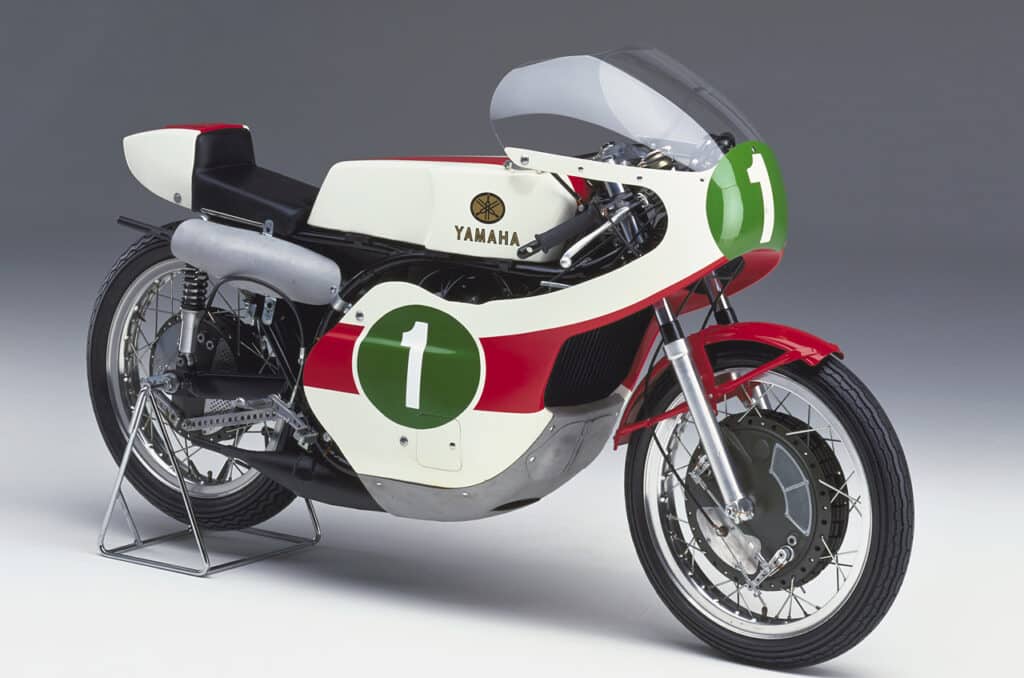
The 250cc Yamaha V4 Grand Prix racer represented the ultimate in two-stroke engine technology at that time
However, while the public focus in the mid-1960s had been on the Grand Prix bikes Yamaha had been working under the radar on the parallel project of enhancing the performance of its road bikes, aided by the introduction of a series of production racers. In the decade to come these would do more than enough to maintain Yamaha’s reputation as leaders in the field of high-performance two-stroke engine development..
The engines of that TD series could be traced back directly to the Yamaha YDS road bike twins first seen in 1959. In its basic format that engine was no different to the humble 250cc Villiers two-stroke twins that powered British lightweight bikes throughout the 1960s! But thanks to a policy of constant development the Yamaha 2-strokes were anything but humble.
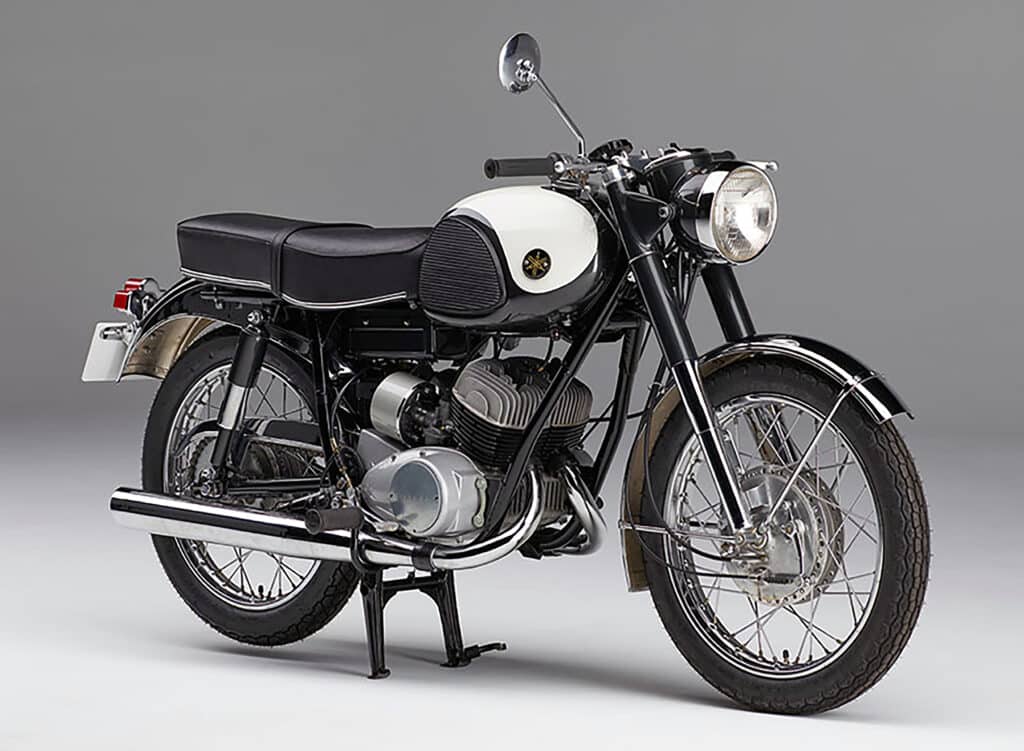
The basic design of the twin-cylinder engine of this early 1960s YDS2 was the beating heart of Yamaha’s whole range of road bikes and production racers for some two decades.
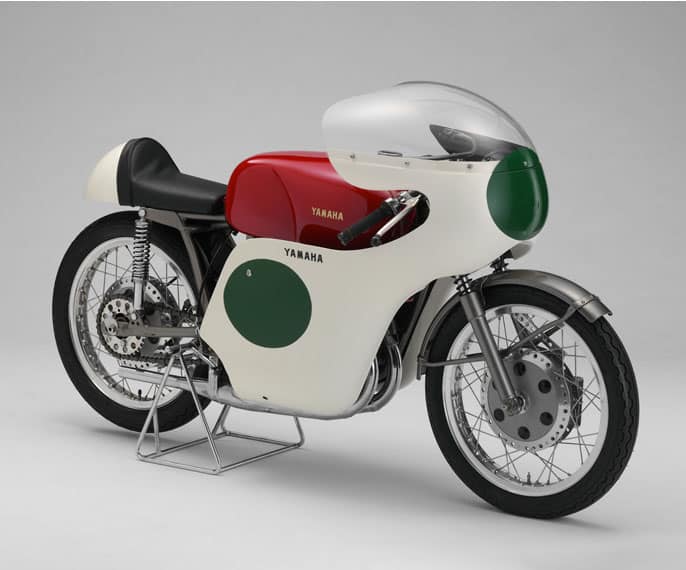
The 1962 250cc 30bhp TD1 was Yamaha’s first production racer and was used mainly in Japan
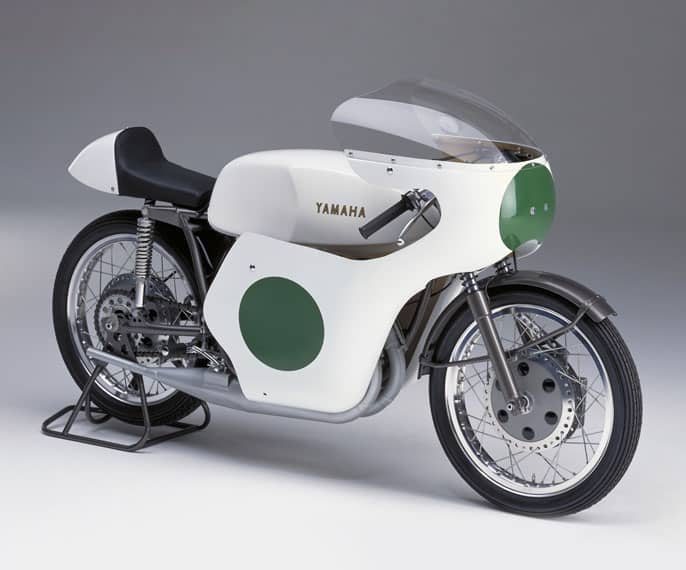
The TD1-B of 1964 was the first Yamaha production racer to be exported to the USA and Europe.
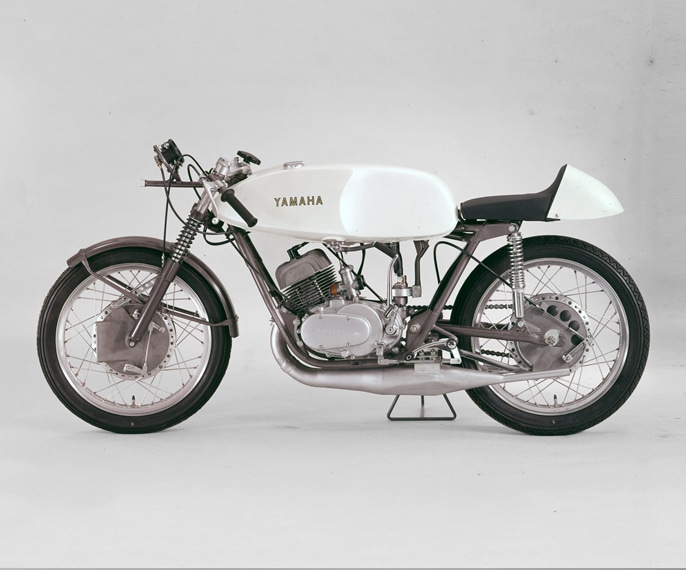
Yamaha 2-strokes: The new ‘boost port’ system introduced on the TD1-C twin was one of the most significant advances in the entire history of two-stroke engine development. Power was increased to 38bhp, which made it king of the 250cc class at national level racing around the world.
The next step in the progress of the production racer series came with the TD1-C model of 1967 – and it was a big one!. Previous TD models had followed conventional two-stroke engine design with two transfer ports between the crankcase and the cylinder. For the TD1-C motor an extra pair of ‘boost ports’ were added to these to achieve more complete scavenging of the crankcase and more complete combustion of the fuel/air charge. The increase in power that resulted made the Yamaha two-stroke twins the world’s fastest production bikes in their class on both road and track.
Much of the testing of the research and development department’s work was carried out in conjunction with a Yamaha US Corporation racing programme with the TD series. It was a logical move because not only did Yamaha consider the USA to be its prime market for sports bike sales but American racing rules at the time dictated that the engines of competing machines had to be based on those of existing road bikes.
The worth of this American-led development was proved in 1969 when Yvon Du Hamel on a 350cc two-stroke Yamaha (less than half the size of the 750cc four-stroke bikes in opposition) took the qualifying record for the Daytona 200 with the first ever 150mph lap of the superspeedway banked oval.
Not only had Yamaha had proved to the world that its bikes didn’t actually need exotic Grand Prix machines in order to win races at very high speeds but it did so with engine technology shared with its road bike range!
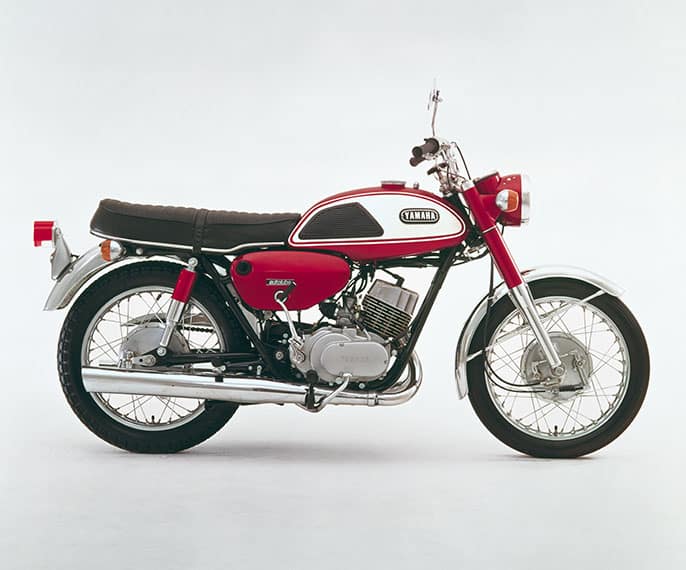
This 1968 Yamaha 350 clearly shows the relationship between the TD production racers and the company’s road bikes.
Yamaha 2-Strokes – There was much more to come from the TD racers during the 1970s, including more World Championships and some iconic road bikes – follow the continuing story in Part Two.
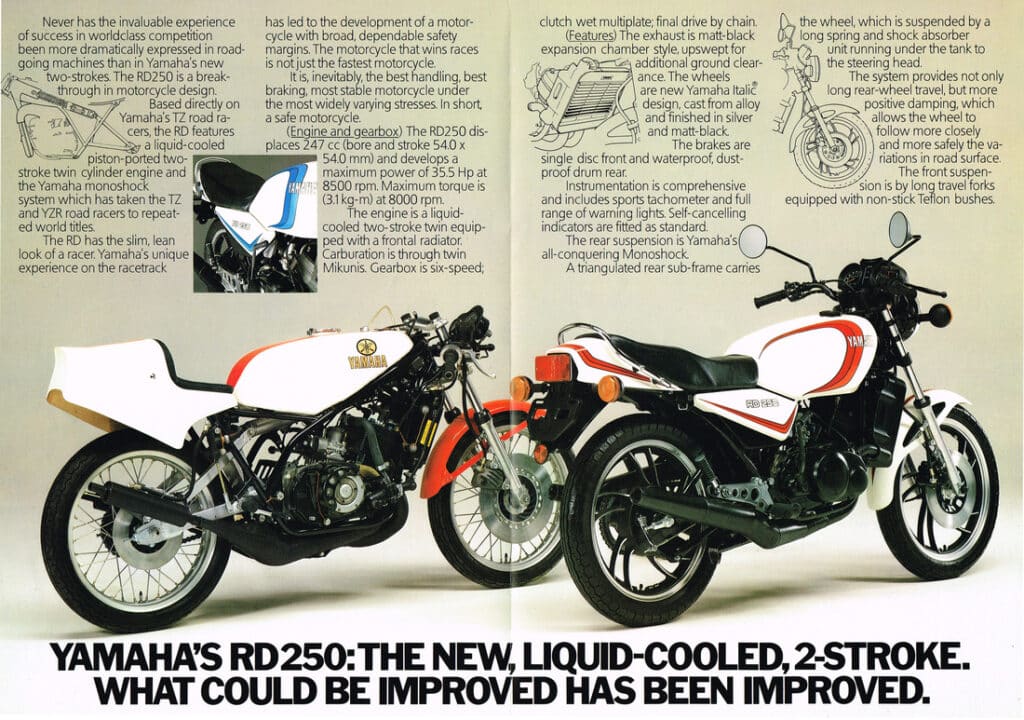
Yahama’s RD250, the new 2 Stroke
Words: Bruce Cox
Photographs: The Motorcycle Files and Yamaha Global Image Library



